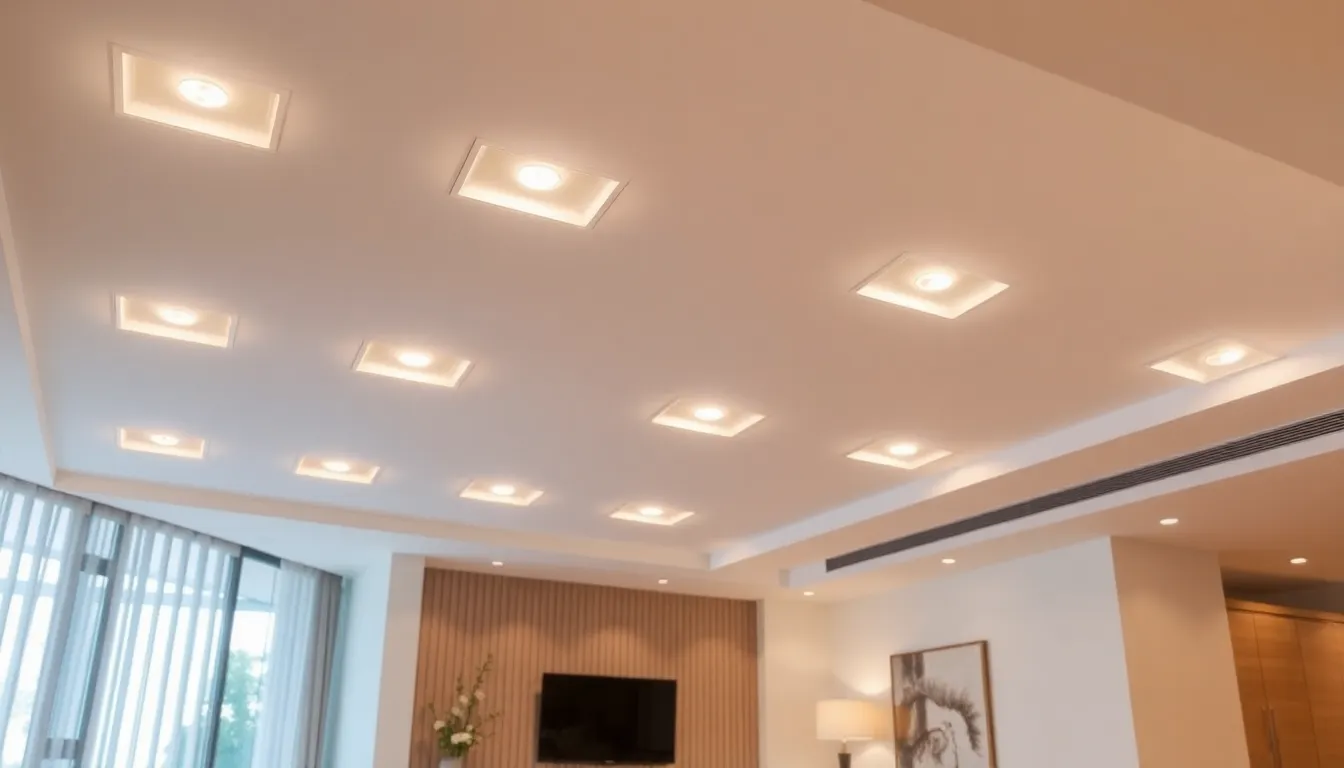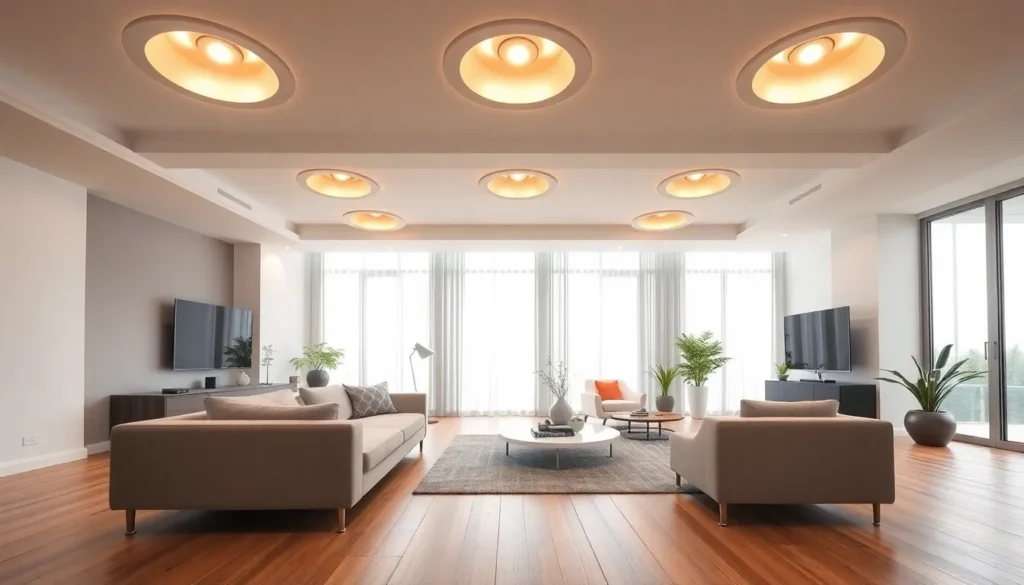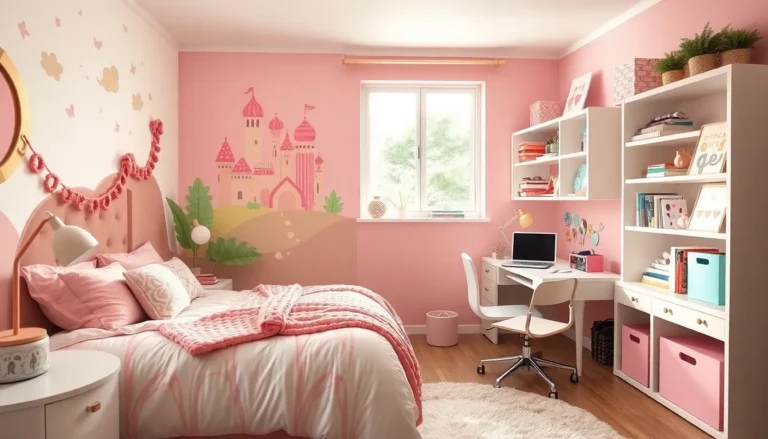Ever walked into a room and thought, “Wow, this space feels so much bigger and brighter”? Chances are, recessed lighting played a starring role in that ambiance. With its sleek design, recessed lighting housing offers a seamless blend of function and style. But, before you start throwing up ceiling fixtures left and right, there’s a lot to consider. From the types available to the nitty-gritty of installation, this guide will shed light on all things recessed lighting housing, without the usual lighting puns. Let’s immerse and brighten your understanding.
Table of Contents
ToggleUnderstanding Recessed Lighting Housing

Recessed lighting, often referred to as can lights or pot lights, are fixtures installed above the ceiling line, creating a sleek, minimalist look. The housing refers to the shell that holds the bulb and wiring. Proper housing is essential for both aesthetics and safety, ensuring the light fixture functions correctly without heating issues. When installed correctly, recessed lighting can create a beautiful, unobtrusive glow that enhances any space.
Understanding the components of recessed lighting housing is crucial. Typically, these include the housing itself, the trim, and the bulb. The housing is available in various sizes and styles, depending on the desired effect and application.
Types of Recessed Lighting Housing
Choosing the right type of recessed lighting housing depends primarily on the ceiling type and desired lighting effect. There are primarily two categories to consider:
- New Construction Housing: Ideal for new builds, this type can be framed right into the ceiling structure. This housing typically allows for easy installation before the drywall goes up.
- Remodel Housing: Perfect for existing ceilings, remodel housing can be retrofitted without major renovations. These fixtures fit through a cutout and secure themselves with framing clips, making them relatively straightforward for updates.
Also, there are specialized housings for different applications: shower housings that adhere to strict moisture requirements and airtight housings designed to minimize air leaks.
Benefits of Recessed Lighting Housing
Recessed lighting housing brings various advantages to residential and commercial settings. Here’s a closer look at some of the standout benefits:
- Space-Saving Design: One of the most appealing aspects is how recess lights use space. Unlike traditional fixtures, they sit flush with the ceiling.
- Versatility in Lighting: Whether it’s for task lighting in a kitchen or a soft glow in a living room, recessed lights can be tailored to meet different lighting needs.
- Increased Home Value: Professionally installed recessed lighting can enhance a home’s aesthetic appeal, potentially increasing its market value.
- Energy Efficiency: With the right bulb choice, recessed lighting can be more energy-efficient than other types of fixtures.
Installation Considerations for Recessed Lighting Housing
Before diving into the installation of recessed lighting, several factors should be considered:
- Ceiling Height: Higher ceilings can create shadows if not correctly spaced, while low ceilings might necessitate smaller housing fixtures.
- Wiring and Safety Codes: Understanding local building codes is critical. Some areas may require specific types of housing or installation methods to ensure safety.
- Light Spacing: A rule of thumb is to space the lights about four to six feet apart to achieve even illumination. This varies depending on the bulb type and its brightness.
- Accessibility for Maintenance: Think about how easily one can access the bulbs for replacements. Choosing a housing style that facilitates easy maintenance can save headaches later.
Finishing Touches: Trim and Bulb Selection
Once the housing is in place, the next step is selecting the right trim and bulbs. The trim affects both the aesthetic and functionality of the lighting.
- Trim Options: Trims come in a broad range of styles, from baffle trims that reduce glare to reflector trims that amplify light. Choosing the right trim can change the entire feeling of a room.
- Bulb Selection: LED bulbs are typically the go-to for their energy efficiency and longevity. But, halogen and incandescent options also exist, each with its color temperature and brightness. When selecting bulbs, consider the Kelvin value, the higher the number, the cooler the light.
Common Mistakes to Avoid
Diving into recessed lighting installation isn’t without its pitfalls. Here are some common mistakes to steer clear of:
- Ignoring Ceiling Heights: Failing to consider your ceiling height can result in inadequate lighting or shadows, undermining the benefits of recessed lighting.
- Poor Spacing: Clumping lights too closely together or too far apart can lead to uneven lighting. Ensuring correct spacing based on room size is essential.
- Underestimating Power Needs: Calculating wattage requirements is crucial. Overloading can lead to flickering lights or blown circuits.
- Neglecting Trim Styles: Choosing inappropriate trims can negate the desired aesthetic, opt for options that align with the overall design of the space.



